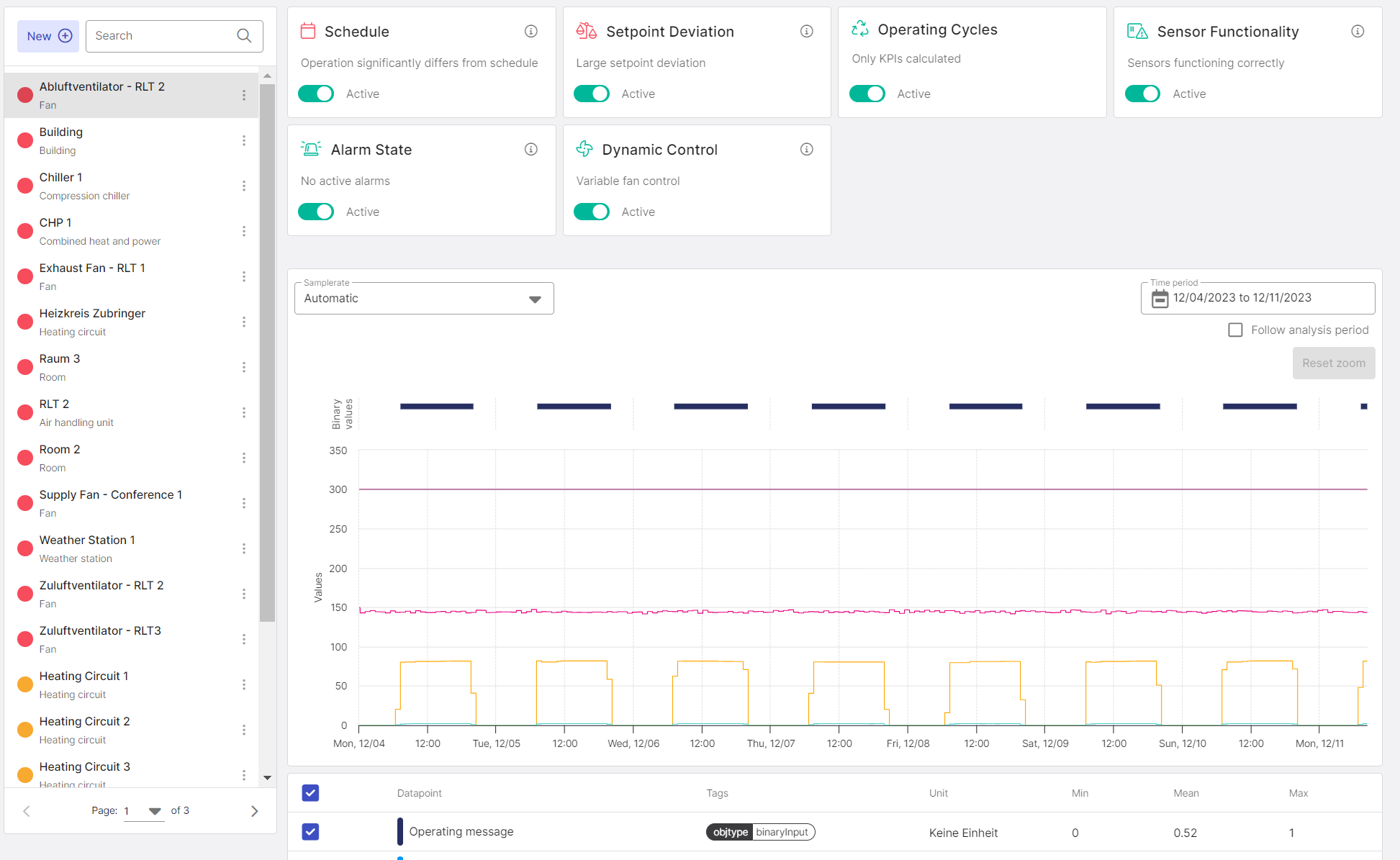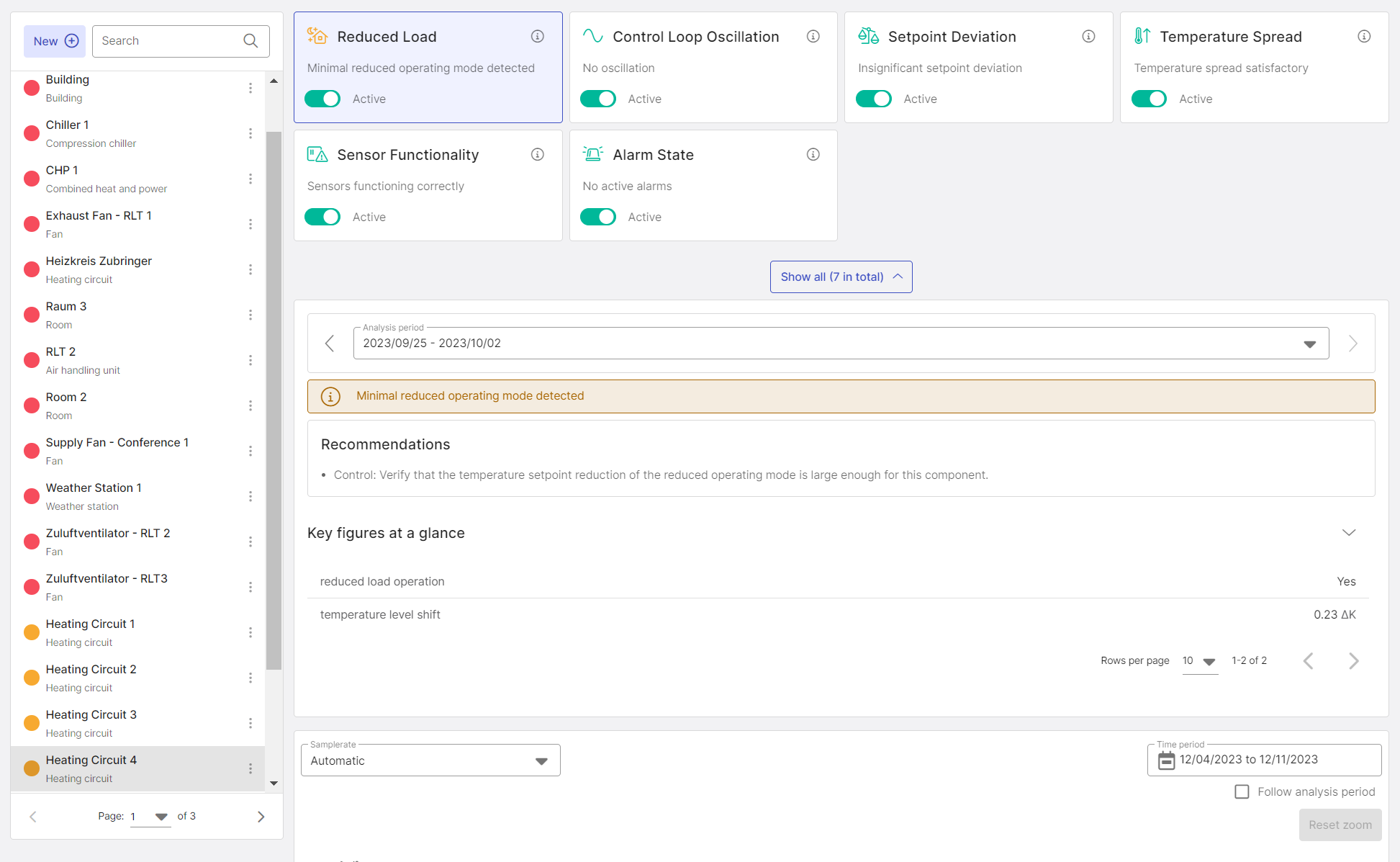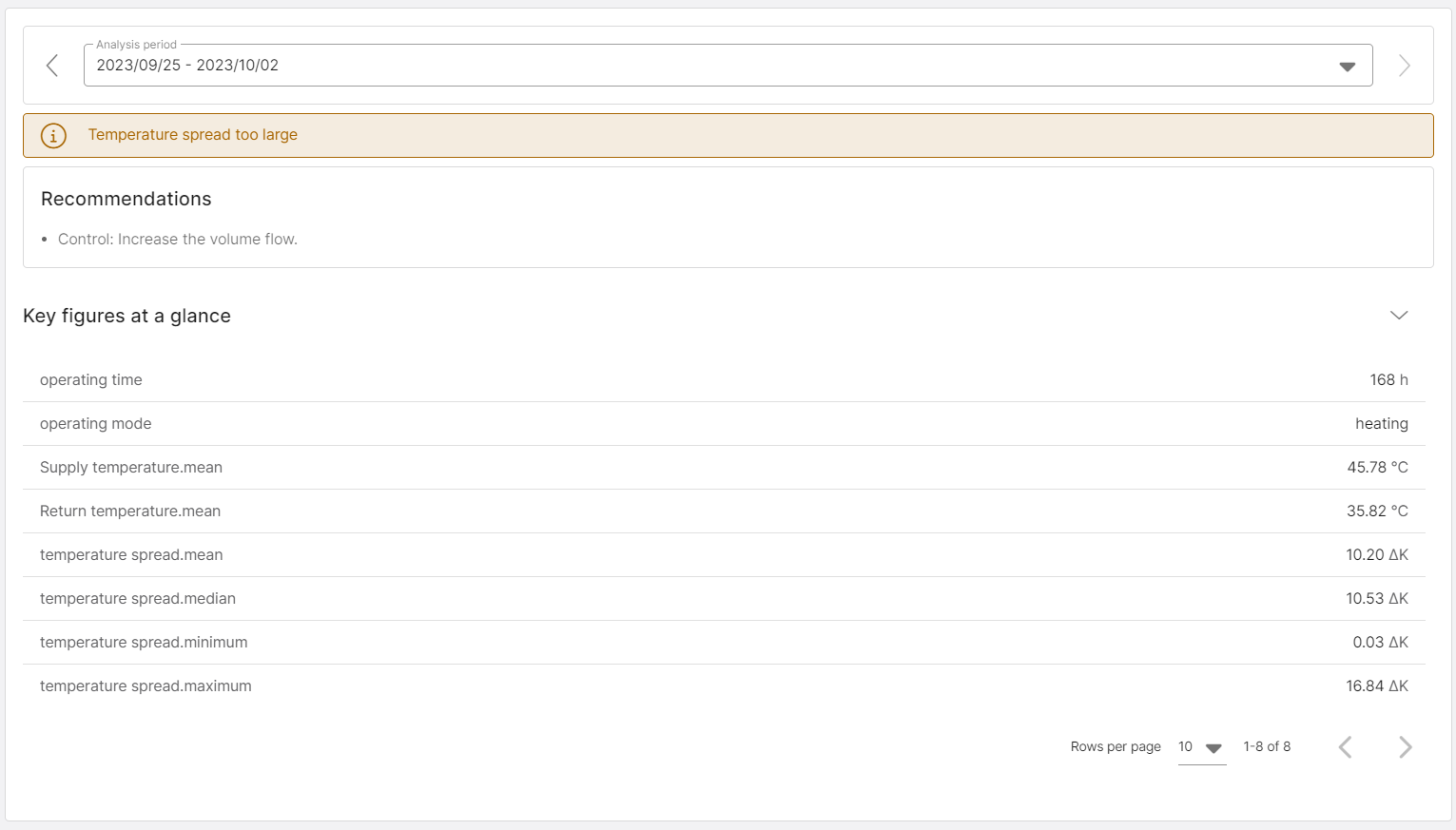Analyses and recommendations
Components
aedifion offers automatically generated recommendations to increase the efficiency and operational quality of building services systems. The following functions can only be used if the product aedifion.analytics is booked.
Digital twins of the individual building systems are required so that analyses can be performed automatically. Instructions on how to create digital twins, also called component, can be found in the section "Create and map new components". There are a variety of component types that can be used to create digital twins, each of which can be stored as a component any number of times per building, such as the component type heating circuit. Analyses including recommendations for action, urgency and key figures are assigned to the individual components in each case.
Analyses
Specific analyses such as "Setpoint Deviation" are stored for each component. Each analysis uses the data summarized in components and automatically evaluates the operating status of the digital twin in question. As a result, the analysis shows specific recommendations for action, urgency and key figures. These differ from component to component.

Figure 1: Overview of the analyses for the component Heating Circuit 4
In order to perform analyses, the individual components must be created and the necessary datapoints assigned
Recommendations

Figure 2: View of the analysis results on the Optimization page
The recommended actions are structured to provide easy-to-acquire insights and quick-to-implement actions to improve operational performance. The recommendations for action are identified by qualitative warning levels as traffic light colors.
Red: Suboptimal performance. Improvement has strong impact or optimization effort is moderate.
Yellow: Suboptimal performance. Effort could be higher than benefit. Implement measure in the course of maintenance work.
Green: Performance is satisfactory. No measure is recommended.
KPIs
Key performance indicators (KPIs) and time series are very individual for each function and are explained in the respective specification of each analysis function under results.

Figure 3: Recommendations and KPIs
